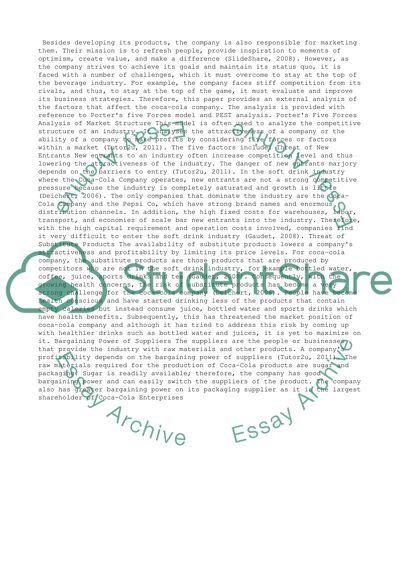Cite this document
(“External Environment Analysis: Coca Cola Company Research Paper”, n.d.)
Retrieved from https://studentshare.org/management/1439160-external-environment-analysis-coca-cola-company
Retrieved from https://studentshare.org/management/1439160-external-environment-analysis-coca-cola-company
(External Environment Analysis: Coca Cola Company Research Paper)
https://studentshare.org/management/1439160-external-environment-analysis-coca-cola-company.
https://studentshare.org/management/1439160-external-environment-analysis-coca-cola-company.
“External Environment Analysis: Coca Cola Company Research Paper”, n.d. https://studentshare.org/management/1439160-external-environment-analysis-coca-cola-company.


